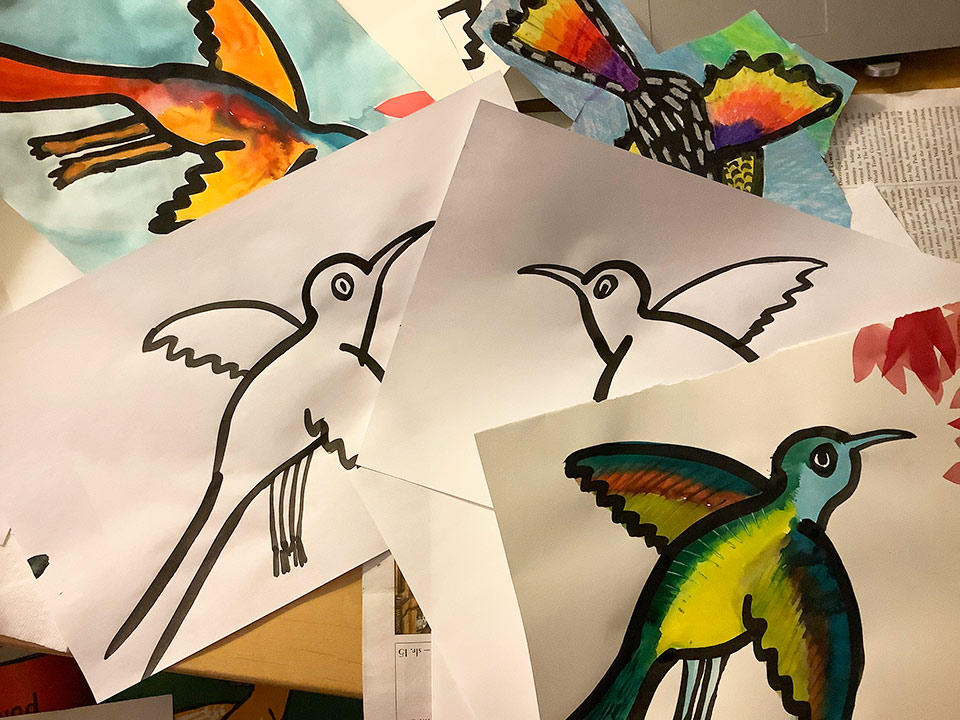POLLINATORS IN ACTION – SUNBIRDS
February 14th at 5:00 PM. To sign up for this program send an email to office@sitenf.org with the note ART WORKSHOP in the subject line. We will email you the ZOOM ID and password.
Materials:
- Water-based paints
- Crayons (optional)
- Sturdy white paper
- Brush and 2 containers of water
- Paper towel
- Newspaper or table covering (optional but recommended)
Sunbirds and spiderhunters make up the family Nectariniidae of passerine birds. They are small, slender passerines from the Old World, usually with downward-curved bills. Many are brightly coloured, often with iridescent feathers, particularly in the males. Many species also have especially long tail feathers. Their range extends through most of Africa to the Middle East, South Asia, South-east Asia and southern China, to Indonesia, New Guinea and northern Australia. Species diversity is highest in equatorial regions.
There are 151 species in 16 genera. Most sunbirds feed largely on nectar, but will also eat insects and spiders, especially when feeding their young. Flowers that prevent access to their nectar because of their shape (for example, very long and narrow flowers) are simply punctured at the base near the nectaries, from which the birds sip the nectar. Fruit is also part of the diet of some species. Their flight is fast and direct, thanks to their short wings.
The sunbirds have counterparts in two very distantly related groups: the hummingbirds of the Americas and the honeyeaters of Australia. The resemblances are due to convergent evolution brought about by a similar nectar-feeding lifestyle. Some sunbird species can take nectar by hovering like a hummingbird, but they usually perch to feed. —wikipedia
Event Location and Ticket Information
Date: Wednesday, February 14, 2024
Times: 5:00 pm - 6:00 pm
Ticket pricing:
Free event
Presenter: Nowodworski Foundation
Presenter Website: sitenf.org


